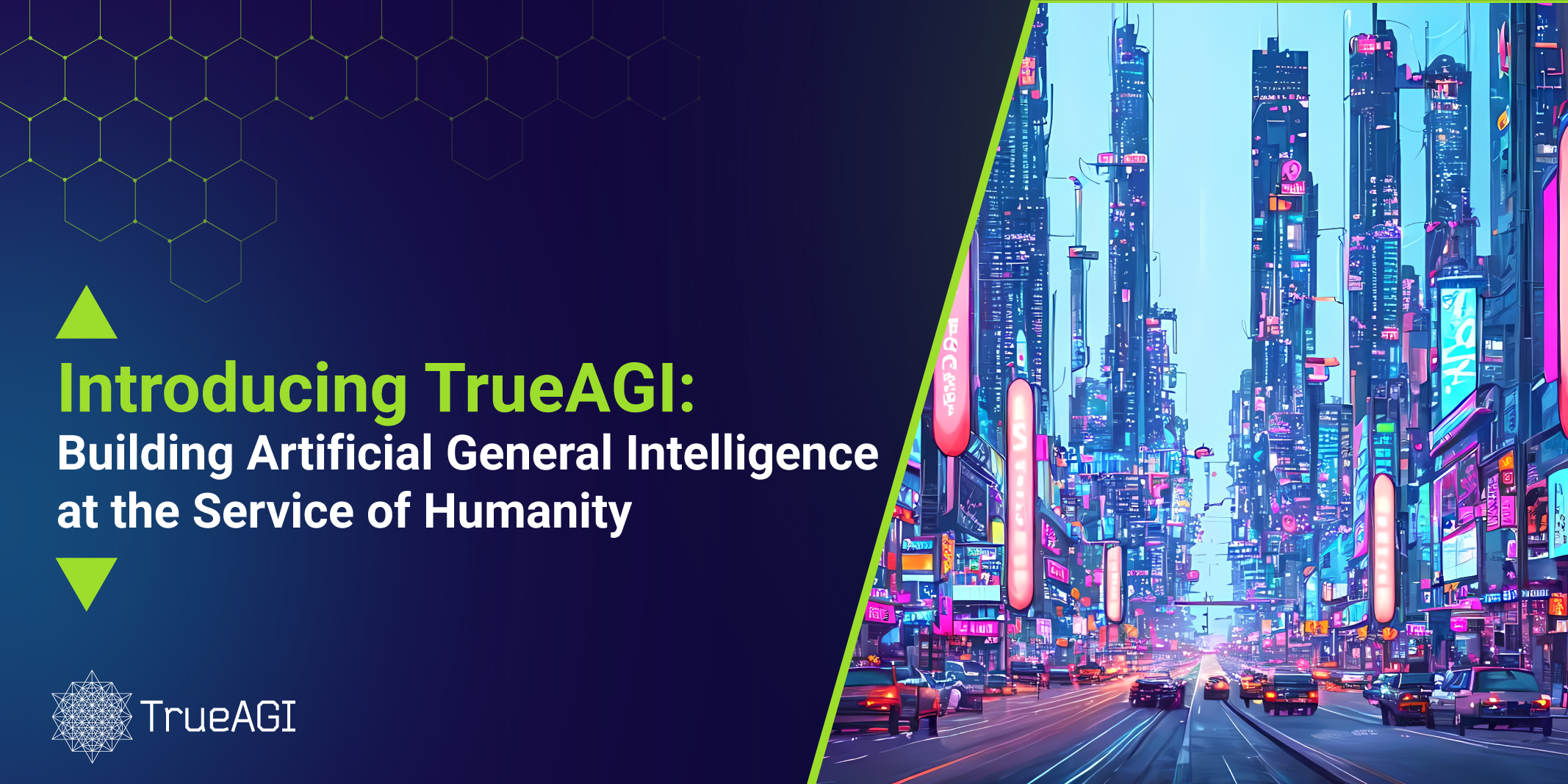Accelerating Progress Towards a Human-Like Artificial General Intelligence
Artificial intelligence has rapidly become the new sensation for both users and businesses.
It only took a few months of experimenting with an AI-powered chatbot for everyone to see this technology’s incredible potential. Now, these recent developments, combined with the market’s growing interest, are fueling a new wave of demand for AI-powered solutions.
In fact, it is estimated that 37% of businesses are now implementing AI solutions in their process—that’s more than one every three!
However, we have only scratched the surface of the true potential of artificial intelligence. There is so much more this technology has to offer, but in order for it to happen, we must progress from artificial intelligence to artificial general intelligence (AGI).
In this article, we’ll explore the current state of AI and its limitations, the transition to AGI and the potential realization of human-like intelligence, and the benefits it can bring to users and businesses alike.
The Current State of Artificial Intelligence
There’s no denying that artificial intelligence has taken a giant leap forward, especially since the release of ChatGPT and the amazing response from the market.
From playing around trying to have ChatGPT say the funniest things to professional applications like content creation, research, and even coding, people have found incredible ways to leverage the power of AI to their advantage.
Yet, as popular as it has become, not many people know how ChatGPT works.
The program is essentially a large language model (LLM) that has been trained on a massive quantity of data—approximately 570 GB of data from various sources, including web pages, articles, and books. When a user enters a query, the system searches through this huge quantity of data, analyzing and discovering language patterns that allow it to forecast the possibility of particular words appearing together.
In other words, ChatGPT formulates all its responses by calculating the probability of a given word appearing after another. This means that the AI doesn’t have any understanding of the answers it produces—it’s pure mathematics. And, it’s also why—pretty regularly—ChatGPT produces faulty or incorrect responses.
While innovative LLMs such as ChatGPT have proven to be very versatile and capable of performing multiple tasks, they lack the ability to produce responses through reasoning and inference. They are the width of entire seas yet the depth of a glass of water.
This prevents current AI models from doing more than what they already do, as they are unable for knowledge transfer and generalization, meaning that we need to train them with ever larger data sets.
Now, imagine we could build an artificial intelligence that, instead of seeing how many times a word appears after another in a certain amount of texts and responding accordingly, it could actually “think” about what you ask it, use logic and reasoning to infer a response, and answer based on that process.
Even more so, it could also learn from previous experiences, and apply that knowledge to all future scenarios and queries.
This technology is referred to by a specific term: AGI, or artificial general intelligence, is an AI model that is capable of genuine cognition at or above the human level. Because it can effectively generalize and transfer knowledge from one situation to another, a “thinking machine” can perform tasks and provide answers in domains on which it has not been trained.
This is what TrueAGI is set out to achieve.
Pursuing Artificial General Intelligence
Artificial general intelligence doesn’t exist yet. For now, it remains a concept of what artificial intelligence could become in the future.
However, it’s fundamental to understand that for AGI to be viable, applicable, and effective, it absolutely must possess certain unique characteristics. In turn, these are deeply intertwined and related to each other, and one cannot exist without the other.
AGI Must Be Reality-Based
If artificial general intelligence is to serve humanity as a whole, it’s necessary that it is grounded to reality, as opposed to current LLMs that are exclusively data-bound.
This requires many capabilities that current AI models do not possess, such as learning from experience, understanding the context in every situation, staying up-to-date with current events and circumstances, and analyzing and interpreting data in real time.
Albeit extremely challenging from a technical standpoint, being able to ground AGI to reality is an utmost necessity for it to be effective and, most importantly, applicable.
Imagine a scenario where a healthcare provider is using an artificial intelligence to diagnose and treat patients with certain conditions. A traditional LLM, such as ChatGPT, would be unsafe in this case since it is trained on a restricted quantity of data and generates replies based on probability, which can be wrong.
Instead, an AGI would be able to analyze each individual patient’s vital signs and symptoms in real time and apply its medical knowledge based on those data. It would then be able to remember each specific case for subsequent tests and treatments, ensuring that each patient receives the precise, personalized care they deserve.
AGI Must Be Creative
Although generative AI models are able to create video, images, sound and text, they are limited by several factors.
Indeed, they only create content as a response to a prompt or input—a human that asks them to do something. In other words, it’s the user who provides the creative element, as all the AI does is re-format the user’s imagination—from text to image, video, sound, or a different text.
However, perhaps the most important lack of generative AI is that it is unable to create anything truly new. Instead, it identifies different elements present in the user’s prompt and combines them in a single piece of content.
For example, DALL·E uses the following prompt as an example:
“An expressive oil painting of a basketball player dunking, depicted as an explosion of a nebula”
Here, DALL·E searches its database for pictures tagged as expressive oil paintings, basketball players, and nebulae explosions; and generates a new image combining all of them. Essentially, it’s “remixing” old elements into a new picture. It’s impressive, but not really creative.
On the other hand, asking a text-to-image generator to create something new without providing any further material to it will likely leave you disappointed with the results.
If you ask DALL·E to illustrate “people playing a sport that doesn’t exist” you’ll likely receive a chaotic image full of people and different sport elements such as footballs, basket balls, rackets, and hockey sticks. That’s because all DALL·E has to go on is “people” and “sports,” and it can’t do anything but search and combine images of them.
AGI is a different story. Being capable of generalizing knowledge and conducting inference processes, it could be able to produce entirely new content, even if there’s no reference to it on the data it’s been trained on.
AGI Must Be Massively Available
Similarly, anyone who wants to use or implement AGI solutions in their business, career, or personal life should be able to do so.
If AGI can only be accessed by individuals or groups based in a specific region of the world or with a large budget to use it, it would never realize its full potential to help mankind as a whole.
Artificial general intelligence should be as accessible and open as the internet. Accessible from anywhere, at any time.
AGI Must Be Beneficial
A technology as revolutionary as AGI has the potential to transform human life and societies
However, to make this scenario a reality, its reasoning and logic should be guided by and uphold humanity’s most precious values: benevolence, trust, ethics, safety and security.
An artificial general intelligence model should always benefit both its users and its providers. It should always defend the truth against misinformation and purposeful biased perspectives that defend certain interests, and it should constantly focus on preserving its users’ safety and security.
In the particular case of AGI being used for business and for-profit purposes, these values must always come first.
Now, this doesn’t mean that these solutions can’t be used to generate revenue. Instead, it means that, if that revenue comes from actions that put other people’s safety at risk or expose them to false information, the AGI should detect this conflict immediately and refrain from performing said actions.
TrueAGI: Making Artificial General Intelligence Globally Available
AGI’s potential to improve human life is beyond imagination, but its achievement is an arduous challenge.
Making AGI a reality will require considerable technical and human resources, enormous patience, persistence, and efforts, and some of the world’s best minds. However, the potential benefits far outweigh the development costs.
In that regard, TrueAGI has been created with the mission to develop, customize, host and deploy AGI for enterprise organizations and help them integrate, enhance and maintain an AGI strategy within their organizations to be competitive and future-forward in the marketplace.
Yet, we mentioned that AGI has to fulfill certain requirements to be effective, namely being reality-based, creative, massively accessible, and beneficial.
TrueAGI will accomplish this by harnessing the capabilities of OpenCog Hyperon—an innovative, open-source platform created specifically for developing artificial intelligence solutions. The OpenCog Hyperon platform includes valuable resources such as an innovative programming language geared for AI and a knowledge graph model that allows many algorithms to run concurrently.
These technological resources will be the foundation of a reality-based, creative, and beneficial AGI.
Learn more about how TrueAGI and OpenCog Hyperon will enable AGI for enterprise organizations.
TrueAGI will build tailored solutions—white-label AGI models customized to fit the needs of specific organizations, with specialized hosting solutions using cloud-based, blockchain-based decentralized setups—using OpenCog Hyperon’s framework, while also making it massively available to anyone willing to implement it.
A new paradigm is emerging, in which artificial intelligence will play a significant role in the technologies we use every day, raising our living standards and providing tremendous wealth for society.
TrueAGI’s purpose is to speed the world’s transition to this new paradigm by developing bespoke solutions for businesses of all sizes to deliver the best and most efficient services available today and to build an AGI that really serves humanity.


Subscribe to our Newsletter
Email Address